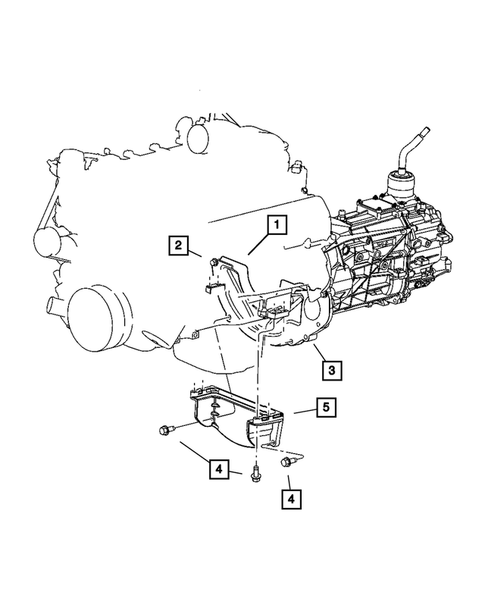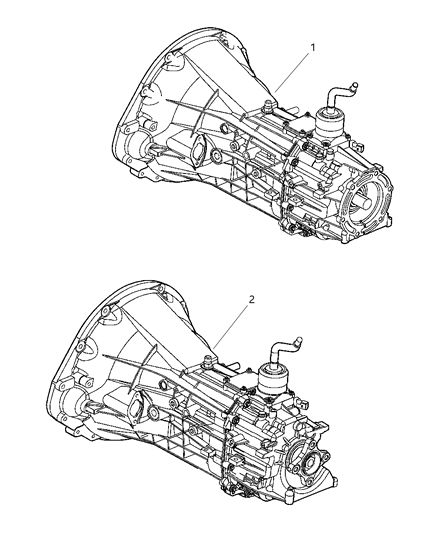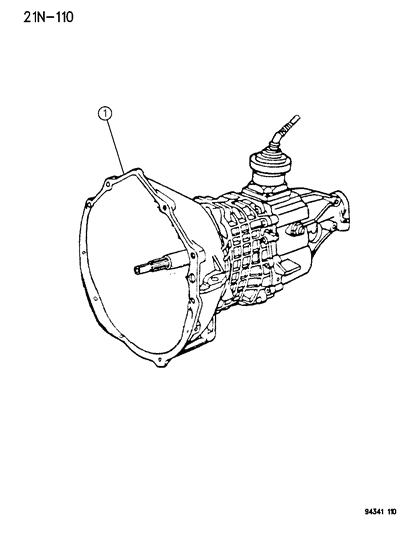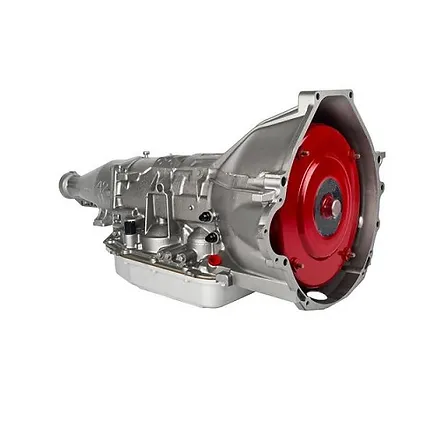Table of Contents
Dodge Dakota transmission interchange guide ,Before to know the Dodge Dakota transmission interchange guide, We need to know what is Dodge Dakota transmission interchange guide
The Dodge Dakota, a mid-size pickup truck produced by Dodge, has had various transmission options over its production years, and the interchangeability of these transmissions can vary depending on the model year and engine type.
Here’s a general overview of how you might approach finding an interchangeable transmission for a Dodge Dakota:
- Model Year Compatibility: Dodge Dakota transmission interchange guide, Transmissions from different model years might not be directly interchangeable due to changes in design, electronics, and mounting points. Generally, transmissions from the same generation of Dakota are more likely to be interchangeable.
- Engine Size and Type: Dodge Dakota transmission interchange guide, The Dodge Dakota was available with several engine options, including inline-4, V6, and V8 engines. Each engine option often had a corresponding transmission. For example, a transmission from a V6 Dakota might not be compatible with a V8 Dakota without modifications.
- Transmission Types: Dodge Dakota transmission interchange guide, Dakota models were equipped with various transmissions over the years, including manual and automatic options. Common transmissions include the 5-speed manual NV3500, 6-speed manual NSG370, and various automatic transmissions like the 4-speed 42RE or 45RFE and the 5-speed 545RFE. Each of these might be specific to certain engine options and model years.
- Transmission Code and Specs: Dodge Dakota transmission interchange guide, When looking for an interchangeable transmission, it’s important to match the transmission code and specifications. This ensures that the transmission will fit and function correctly with your truck’s engine and drivetrain.
- Vehicle Identification Number (VIN): Dodge Dakota transmission interchange guide, Use the VIN to find exact specifications for your vehicle. This can help you identify the correct transmission model and ensure compatibility when sourcing a replacement.
For precise interchange information, consulting a repair manual for your specific year and model of Dakota, or contacting a Dodge dealership or experienced mechanic, can provide detailed guidance. If you’re sourcing a used transmission, ensure that it has been tested and is compatible with your vehicle’s specifications.
Top of Form
Bottom of Form
How interchangeable are transmissions?


 Dodge Dakota transmission interchange guide, transmissions will have a particular bolt pattern to match up to a certain family of engines, so within that family there should be a lot of interchangeability. Some transmissions will have a separate bellhousing, so they can be adapted to work with different engines that have a different bolt pattern.
Dodge Dakota transmission interchange guide, transmissions will have a particular bolt pattern to match up to a certain family of engines, so within that family there should be a lot of interchangeability. Some transmissions will have a separate bellhousing, so they can be adapted to work with different engines that have a different bolt pattern.
How do I identify my Dodge transmission?
Open the driver’s side door and look for a white placard with small black lettering. This card contains specific details about the year the car was made, its transmission, engine specifications and other details.
What’s the difference between a Dodge V6 and V8?
What’s the difference between a V6 and a V8? A V-6 engine contains 6 cylinders for fuel intake, while a V-8, you guessed it, contains 8. A smaller engine is generally a more economical choice (better gas mileage), while a V-8 will give you more power and performance.
How interchangeable are transmissions?
Dodge Dakota transmission interchange guide, Transmissions will have a particular bolt pattern to match up to a certain family of engines, so within that family there should be a lot of interchangeability. Some transmissions will have a separate bellhousing, so they can be adapted to work with different engines that have a different bolt pattern. Transmissions are not universally interchangeable, as they need to match the specific requirements of the vehicle’s engine, drivetrain, and other components. Here are some factors that affect interchangeability:
- Mounting Points and Fitment: Dodge Dakota transmission interchange guide, The transmission must fit the vehicle’s engine and mounting points. Different vehicles and even different models within the same brand may have different mounting configurations.
- Transmission Type: Dodge Dakota transmission interchange guide, There are manual, automatic, and continuously variable transmissions (CVTs), and they generally are not interchangeable with each other. Even within these categories, variations exist.
- Gear Ratios: Dodge Dakota transmission interchange guide, Different transmissions have different gear ratios, which affect the vehicle’s performance and fuel efficiency. A transmission designed for one vehicle may not perform optimally in another if the ratios differ significantly.
- Drivetrain Configuration: Vehicles with front-wheel drive, rear-wheel drive, all-wheel drive, or four-wheel drive require specific transmissions designed for those configurations. Transmissions are not easily interchangeable across different drivetrain layouts.
- Transmission Control Modules: Modern transmissions are often controlled by electronic modules. These modules may be specific to a particular vehicle or engine setup, making it difficult to swap transmissions without reprogramming or replacing these control units.
- Bell Housing and Clutch: In manual transmissions, the bell housing must match the engine’s bolt pattern, and the clutch assembly needs to be compatible. Differences in these components can make direct swaps challenging.
- Supporting Components: Driveshafts, axles, and other drivetrain components may need to be modified or replaced to accommodate a different transmission.
In summary, while it is sometimes possible to swap transmissions between similar models or from the same manufacturer, it often requires careful consideration of all the factors mentioned above. Always consult with a professional or refer to vehicle-specific documentation when considering a transmission swap.
Can any engine work with any transmission?
An engine from a car of the same make and model would usually be a good substitute. Otherwise, without something like an engine swap compatibility chart, it can be hard to find an engine that’s compatible with the vehicle’s transmission, suspension and other components.
Conclusion of Dodge Dakota transmission interchange guide
When it comes to swapping transmissions in a Dodge Dakota, several factors must be considered, including the year, engine type, and drivetrain configuration. Here’s a general guide to help you understand which transmissions might be interchangeable:
1. Transmission Types
Manual Transmissions:
- NV3500: Commonly used in Dakota models from the late 1990s to early 2000s, particularly with V6 engines.
- NV4500: Found in some late 1990s models, often with the 5.9L V8 engine.
Automatic Transmissions:
- A500/42RE: Used in 1997-2004 Dakotas with V6 engines.
- A518/44RE: Common in 1997-2004 Dakotas with V8 engines.
- 5-45RFE: Found in some 2000s models, offering better performance and efficiency.
2. Year Compatibility
Transmission compatibility often depends on the model year of the Dakota. While transmissions from similar years and engine configurations are generally interchangeable, differences in wiring, sensors, and control modules can complicate swaps.
3. Engine Compatibility
Ensure that the transmission you are considering matches the engine of your Dakota. Different engines (e.g., 3.9L V6, 4.7L V8, 5.9L V8) might require specific transmissions.
4. Drivetrain Configuration
- 2WD vs. 4WD: Transmissions for 2WD and 4WD Dakotas are different due to the transfer case and different mounting configurations. Ensure the transmission you choose matches your drivetrain configuration.
5. Control Modules
Modern Dakotas use electronic control modules to manage transmission functions. When swapping transmissions, especially automatic ones, ensure compatibility with the existing control modules or be prepared for possible reprogramming.
6. Physical Mounting and Connections
Check the bell housing, driveshaft length, and other physical connections. Mounting points and driveshaft configurations might differ between models and years.
7. Additional Considerations
- Torque Converter: Make sure that the torque converter is compatible with the new transmission.
- Shifters and Linkages: The shift lever and linkage setup might need adjustment or replacement.
Resources and Advice
- OEM Parts Catalogs: Consult the OEM parts catalog or a dealer for the exact transmission part numbers and compatibility.
- Forums and Groups: Join Dodge Dakota forums and communities for specific advice and experiences from other enthusiasts.
- Professional Advice: Consult a professional mechanic or transmission specialist for guidance on the swap process and any necessary adjustments.
Conclusion
Swapping transmissions in a Dodge Dakota involves ensuring compatibility with the engine, drivetrain, and control systems. While certain transmissions from similar models and years may be interchangeable, attention to detail is crucial to ensure a successful and functional swap.
